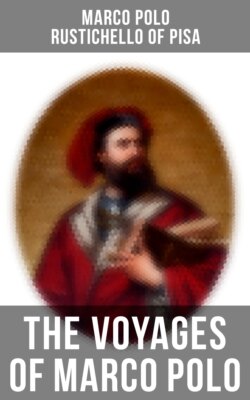Читать книгу The Voyages of Marco Polo - Марко Поло - Страница 68
На сайте Литреса книга снята с продажи.
ОглавлениеCHAPTER XII.
Table of Contents
OF THE MONASTERY OF ST. BARSAMO ON THE BORDERS OF TAURIS.
On the borders of (the territory of) Tauris there is a monastery called after Saint Barsamo, a most devout Saint. There is an Abbot, with many Monks, who wear a habit like that of the Carmelites, and these to avoid idleness are continually knitting woollen girdles. These they place upon the altar of St. Barsamo during the service, and when they go begging about the province (like the Brethren of the Holy Spirit) they present them to their friends and to the gentlefolks, for they are excellent things to remove bodily pain; wherefore every one is devoutly eager to possess them.[NOTE 1]
NOTE 1.—Barsauma ("The Son of Fasting") was a native of Samosata, and an Archimandrite of the Asiatic Church. He opposed the Nestorians, but became himself still more obnoxious to the orthodox as a spreader of the Monophysite Heresy. He was condemned by the Council of Chalcedon (451), and died in 458. He is a Saint of fame in the Jacobite and Armenian Churches, and several monasteries were dedicated to him; but by far the most celebrated, and doubtless that meant here, was near Malatia. It must have been famous even among the Mahomedans, for it has an article in Bákúi's Geog. Dictionary. (Dír-Barsúma, see N. et Ext. II. 515.) This monastery possessed relics of Barsauma and of St. Peter, and was sometimes the residence of the Jacobite Patriarch and the meeting-place of the Synods.
A more marvellous story than Marco's is related of this monastery by Vincent of Beauvais: "There is in that kingdom (Armenia) a place called St. Brassamus, at which there is a monastery for 300 monks. And 'tis said that if ever an enemy attacks it, the defences of the monastery move of themselves, and shoot back the shot against the besieger."
(Assemani in vol. ii. passim; Tournefort, III. 260; Vin. Bell. Spec. Historiale, Lib. XXX. c. cxlii.; see also Mar. Sanut. III. xi. c. 16.)
